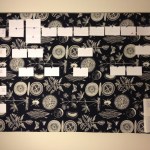Heather and I both read and write young adult fiction, so we have a solid understanding of this market and what makes it tick. In the last decade, the popularity of YA has hit the stratosphere. Author megastars rise up from nowhere almost overnight. Big movie franchises and huge book deals are becoming normal events. …
Continue reading “Y is for Young Adult Fiction”
Category: *Writing Craft
X is for X-Ray
What does “x-ray” have to do with writing craft? I didn’t choose it just because I needed an “X” word for the #AtoZChallenge, or because I already used “x-rated” for last year’s post (X-Rated: Should YA Books Have a Rating System?), but because all writers need to be able to check the spine of their …
Continue reading “X is for X-Ray”
V is for Vocabulary
For writers, words make the Earth spin round. We can battle extraterrestrial invaders or colonize a new galaxy all with the power of our language. We use words every day, and yet we still want to blast them with a death ray when they refuse to obey. Today it’s all about the words and the …
Continue reading “V is for Vocabulary”
U is for Unreliable Narrators
I love unreliable narrators because they go hand-in-hand with surprise endings. No matter the genre, when a narrator is not telling the truth there is mystery in the story. 3 Tips for Writing Unreliable Narrators Track the truth. Whether the narrator is lying on purpose or not, you the writer need to keep track of …
Continue reading “U is for Unreliable Narrators”
R is for Reversal
One of the many things I’m learning from writing this blog is that people have different definitions for writing terms. When Robin first wrote a post on reversals, I thought to myself, “Oh, I call those Turning Points!” Perhaps that’s the screenwriting term. But both mean the same thing – a moment where the story …
Continue reading “R is for Reversal”
Q is for Questions
Questions are what keep readers interested in a story. At every moment in your novel, the reader must want to know the answer to a question, otherwise there’s no reason to keep reading. There are three types of questions in every good story, and I’ll endeavour to give you some tips on how to make …
Continue reading “Q is for Questions”
P is for Pinch Points
If you’re a plotter, or if you read Heather’s O is for Outlines post, you know about tentpoles. These are crucial events in every story that give the plot a shape. Pinch points act like the secondary flanking poles on your tent. They prop up the story structure between the first plotpoint and the midpoint, …
Continue reading “P is for Pinch Points”
O is for Outlines
As a screenwriter, outlines are mandatory. Not so for authors. If you’re penning a novel, it seems as if you must choose between two camps – plotter (those who outline) or pantser (those who start writing a manuscript sans outline). But it doesn’t have to be one or the other, and I think the vast …
Continue reading “O is for Outlines”
N is for Narrative
Narrative is a story’s fuel, and just like rocket fuel, if you use the right amount you head for the stars in style. Add too little, and you get no lift off. Add too much, and we know what happens, and it’s not good. To make matters more complicated, narrative is a compound – POV, …
Continue reading “N is for Narrative”
M is for Midpoint
If you’re a plotter like Heather and I are, you should know about the importance of the midpoint event. It’s one of those important story structure tentpoles Heather will be telling you all about in her O is for Outlining post. The midpoint is when critical new information is introduced to the story and it …
Continue reading “M is for Midpoint”








